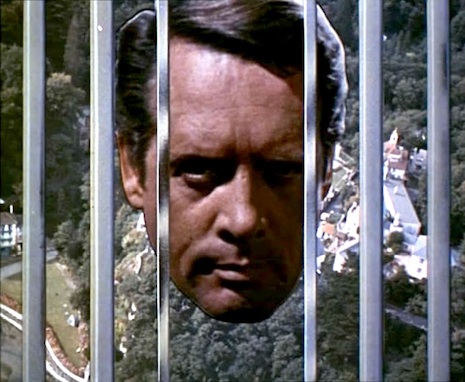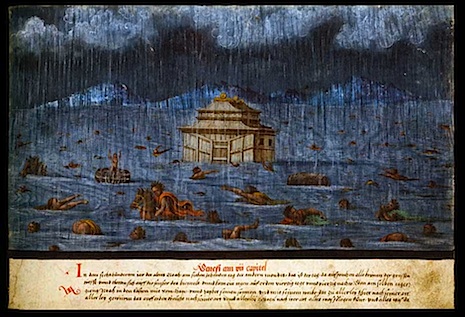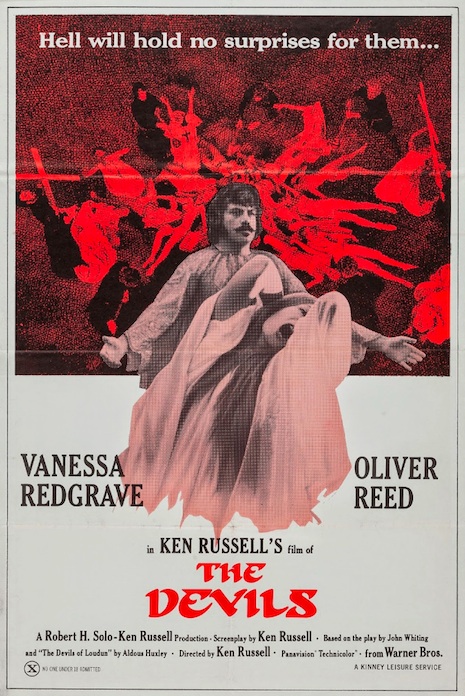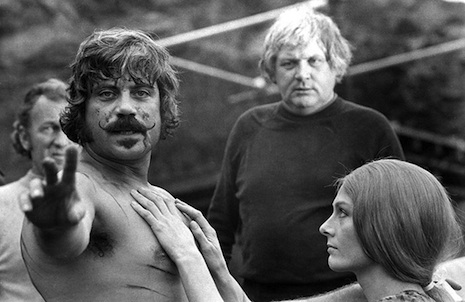
The actor Patrick McGoohan had been kicking around ideas for a new television series when writer George Markstein told him about Inverlair Lodge in Scotland. The Lodge had been used by Special Operations Executive during the Second World War as “a detention or internment camp” for those individuals who refused to take part in covert operations “once they became aware of the full details.”
Some were unable to kill when the occasion was reduced to a one-on-one scenario, as opposed the anonymity of a battlefield exchange. With information being released on a Need to Know basis, their training meant that they were in possession of highly classified and secret information relating to pending missions, and could not be allowed to return to public life, where a careless remark could have compromised their secrecy.
As Markstein later explained the residents were:
...largely people who had been compromised. They had reached the point in their career where they knew too much to be let loose, but they hadn’t actually done anything wrong. They weren’t in any way traitors, they hadn’t betrayed anything, but in their own interest it was better if they were kept safely.
Inverlair Lodge was also known as “No. 6 Special Workshop School.” McGoohan was intrigued by the idea and began developing a series idea set in a similar internment camp, The Prisoner.

Patrick McGoohan started his career as an actor in theater. He was spotted early on by Orson Welles who cast him his production of Moby Dick. Welles thought McGoohan had “unquestionable” acting ability and thought he would become one of cinema’s greatest actors.
McGoohan’s early success in theater led to a movie contract. Unfortunately, the film producers who snapped him up didn’t know what to do with this unique talent. McGoohan was cast in a few B-movies that offered limited scope for him to shine. At his earliest opportunity, McGoohan got out of his film contract and moved into television.
Learning from his ill-fated experience in movies, McGoohan stipulated that he had control over what he did on the small screen. McGoohan was a Roman Catholic and eschewed violence and refused to kiss on grounds that he considered it unnecessary and even possibly adulterous.
In 1960, he starred as John Drake in Danger Man. The series was moderately successful on its first run, but quickly took off after the release of the first James Bond feature Dr. No—a film that McGoohan had knocked back as he disliked its script’s promiscuous sex and violence.
By 1966, Danger Man was a hit across most of the world and McGoohan was TV’s highest paid actor. But McGoohan felt he had achieved all he could with the character and wanted to move on. Determined to keep him working for his TV company, legendary producer Lew Grade asked McGoohan if there was anything he wanted to make. McGoohan pitched him The Prisoner. Grade liked it and agreed to a produce it. The deal was sealed on a handshake.
A secret agent (McGoohan) resigns his commission to his handler—a cameo from the show’s co-creator George Markstein who is seen in the opening titles. Returning to his apartment, McGoohan is gassed. When he awakes he is a prisoner in the “Village” a kind of Psy-Ops theme park on a strange island. He no longer has a name but is identified only as “No. 6.” He is interrogated by No. 2 who demands “information.” In each episode No. 6 attempts to escape the Village while trying to unravel the mystery of who is No. 1.
The Prisoner became one of the most famous TV series of the 1960s. It was hailed as “television’s first masterpiece”—one of the most talked about and controversial shows ever made. Almost fifty years after it was first aired, its appeal continues—and The Prisoner was even remade in 2009 with Jim Caviezel as No. 6 and Ian McKellen as No. 2.
There are numerous theories as to the “meaning” of The Prisoner, but it difficult not to view the series without some small reference to McGoohan’s own religious beliefs. Here is an island where everyone is watched, recorded, and examined by an omnipotent and omniscient overlord; where No. 6 is repeatedly asked to give up information—or to confess his guilt; and where No. 1 is finally revealed to be No. 6—“The greatest enemy that we have” as McGoohan described No. 1 in an interview with Wayne Troyer:
No. 1 was depicted as an evil, governing force in this Village. So, who is this No. 1? We just see the No. 2’s, the sidekicks. Now this overriding, evil force is at its most powerful within ourselves and we have constantly to fight it, I think, and that is why I made No. 1 an image of No. 6. His other half, his alter ego.
McGoohan suggests that “The greatest evil that one has to fight constantly, every minute of the day until one dies, is the worst part of oneself”—which is something he could have lifted directly from the Catholic belief in “original sin.”
Like another Catholic, writer Anthony Burgess—who wrote about the freedom of an individual to do right or wrong in his cult novel A Clockwork Orange—McGoohan stated that No. 6:
...shouldn’t have to answer to anyone. It’s entirely his prerogative, his God-given right as an individual, to proceed in any way he sees fit. That’s the whole point of it all.
The Prisoner was not just a Cold War series about individual freedom in the face of totalitarianism but the freedom of each individual to choose one’s own path and take responsibility for their own actions in a materialist society. McGoohan was against the materialist/capitalist world of the Village and when The Prisoner ended in 1968, he aligned himself with the rioting students in Paris. He hoped his series might inspire a revolution, a point he discussed in an interview as to why the French were so obsessed with his series:
...there comes a time when revolt is necessary: In the last episode…there was no room for niceness anymore. There were machine guns, and people died. It was time for the Revolution. The French know that: Allons z’ enfants…”
Watch ‘One Into Six’ plus McGoohan’s lost ‘LA Tapes,’ after the jump…




































